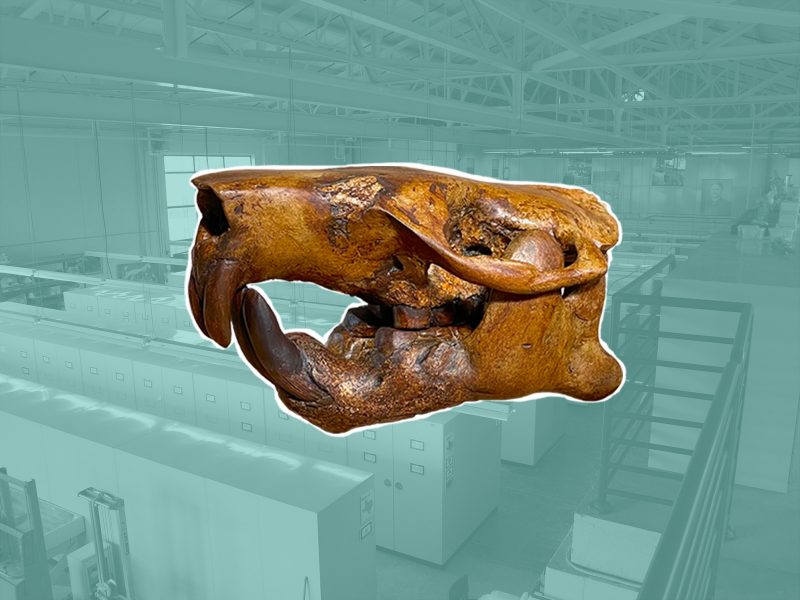Beaver Fossil Named For Buc-ee’s
December 12, 2023

The most famous beaver in Texas has made it into the fossil record, thanks to scientists at the Jackson School of Geosciences.
The scientists discovered a new species of prehistoric beaver in the school’s fossil collections and named it after Buc-ee’s, a Texas-based chain of popular travel centers known for its cartoon beaver mascot.
The beaver is called Anchitheriomys buceei, or “A. buceei” for short.
Steve May, a research associate in the Department of Earth and Planetary Sciences, said that the beaver’s Texas connection and a chance encounter with a Buc-ee’s billboard inspired the name.
May is the lead author of the paper that describes A. buceei, along with another, much smaller species of fossil beaver. Published in the journal Palaeontologia Electronica, the paper provides an overview of beaver occurrences along the Texas Gulf Coast from 15 million to 22 million years ago based on bones and archival records in the Jackson School collections.
While driving down a highway in 2020, May spotted a Buc-ee’s billboard that said, “This is Beaver Country.” The phrase brought to mind the Texas beaver fossils he had been studying.
“I thought, ‘Yeah, it is beaver country, and it has been for millions of years,’” May said.
A.buceei lived in Texas about 15 million years ago. Aside from being about 30% larger, it probably resembled modern beavers, according to Matthew Brown, the director of the Jackson School’s vertebrate paleontology collections. The Jackson School collections house A. buceei fossils from six Texas sites. But most of what researchers know about the new fossil beaver comes from a unique partial skull from Burkeville, Texas. The fossil is a fusion of bone and a brain cast that was created when sediment naturally seeped into the beaver’s brain cavity eons ago, creating a rock replica of its brain as the specimen fossilized.
High-resolution X-ray images of the skull obtained at UT’s Computed Tomography Lab brought small anatomical details of the skull into clear view.
The skull was originally collected by a team of Texas paleontologists in 1941. One of them, Curtis Hesse, a museum curator at Texas A&M University, said in notes that he intended to name it a new species. However, Hesse died in 1945 before he could complete his study and publish his findings. Almost 80 years later, May and Brown, with the help of new technology and a better understanding of the beaver fossil record, picked up where Hesse left off.
After hearing about the ancient beaver named after his business, the founder and CEO of Buc-ee’s, Arch “Beaver” Aplin III, said that Buc-ee’s has a longer history in Texas than he initially thought.
“Buc-ee’s was founded in 1982, but we may need to rethink our beginnings,” he said.
The study was funded by the Jackson School and the Texas Historical Foundation.
Back to the Newsletter